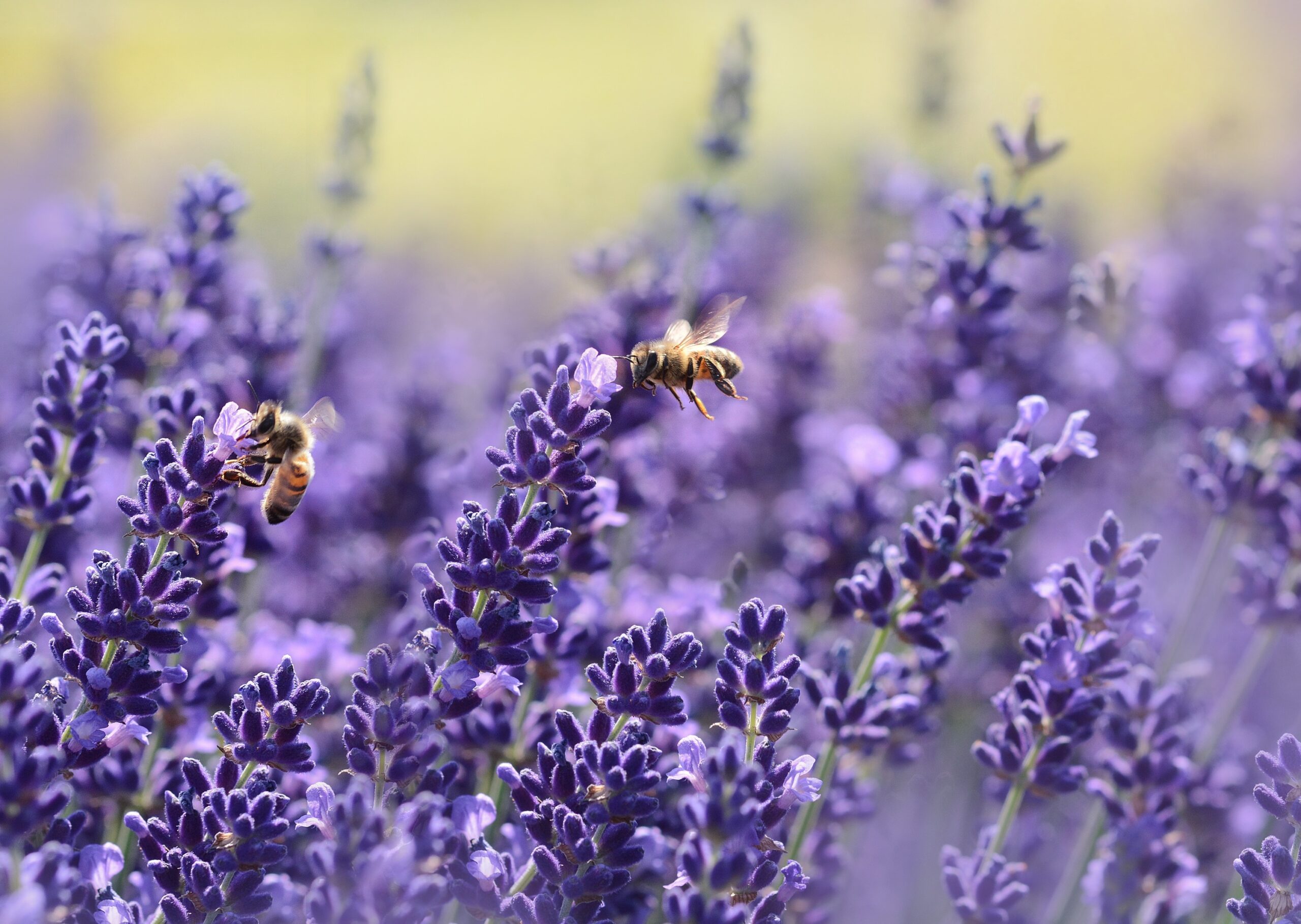Bees are vital pollinators, and you can help support their populations by planting flowers that provide nectar and pollen. Below is a ranked list of the best flowers to attract bees, complete with details on cultivars, where they grow best, and why bees love them!
1. Lavender (Lavandula spp.)
Why Bees Love It: Lavender’s fragrant flowers are rich in nectar, making them a go-to choice for bees during their foraging season.
Recommended Cultivars:
- Lavandula angustifolia ‘Hidcote’ (compact, deep purple blooms)
- Lavandula x intermedia ‘Grosso’ (large blooms, highly fragrant)
Where It Grows Best: Lavender thrives in well-draining soil with full sun. It prefers dry climates but can adapt with proper drainage. Ideal for borders, herb gardens, or containers.
2. Bee Balm (Monarda spp.)
Why Bees Love It: Its tubular flowers are perfect for bees, hummingbirds, and butterflies. Bee balm blooms in midsummer, offering a reliable nectar source.
Recommended Cultivars:
- Monarda didyma ‘Jacob Cline’ (vivid red blooms, mildew-resistant)
- Monarda fistulosa ‘Claire Grace’ (lavender flowers, excellent pollinator attraction)
Where It Grows Best: Bee balm prefers moist, rich soil and full to partial sun. It can grow in zones 3–9, making it versatile across climates.
3. Sunflowers (Helianthus annuus)
Why Bees Love It: Sunflowers provide an abundant source of pollen and nectar. Certain varieties bloom continuously, offering food throughout the growing season.
Recommended Cultivars:
- ‘Lemon Queen’ (pale yellow petals, loved by bees)
- ‘Autumn Beauty’ (multi-colored blooms, long flowering period)
Where It Grows Best: Sunflowers grow in almost any soil but thrive in well-drained, fertile soil with full sun. They make excellent backdrops in gardens.
4. Coneflowers (Echinacea spp.)
Why Bees Love It: The prominent cone and colorful petals make it easy for bees to access nectar and pollen.
Recommended Cultivars:
- Echinacea purpurea ‘Magnus’ (classic pink-purple flowers)
- Echinacea ‘Cheyenne Spirit’ (vibrant mix of orange, red, and yellow blooms)
Where It Grows Best: Coneflowers are hardy perennials that prefer full sun and well-draining soil. They’re drought-tolerant and excellent for zones 3–8.
5. Black-Eyed Susans (Rudbeckia hirta)
Why Bees Love It: These cheerful yellow flowers are a dependable nectar source, especially in late summer.
Recommended Cultivars:
- ‘Goldsturm’ (classic, prolific blooms)
- ‘Cherry Brandy’ (unique red-maroon flowers)
Where It Grows Best: Black-eyed Susans are versatile and thrive in full sun to light shade, adapting well to poor soil. They’re perfect for zones 3–9.
6. Borage (Borago officinalis)
Why Bees Love It: The star-shaped blue flowers are rich in nectar and bloom continuously throughout the season.
Where It Grows Best: Borage is an annual herb that thrives in full sun and well-drained soil. It self-seeds readily, making it a great low-maintenance addition to vegetable gardens or pollinator patches.
7. Salvia (Salvia spp.)
Why Bees Love It: Salvias offer tubular flowers packed with nectar, perfect for bees. They bloom from spring to fall.
Recommended Cultivars:
- Salvia nemorosa ‘Caradonna’ (deep purple flowers, long blooming season)
- Salvia greggii ‘Hot Lips’ (bi-colored red and white blooms)
Where It Grows Best: Salvias thrive in full sun and well-drained soil. They tolerate drought once established, making them ideal for xeriscaping.
8. Thyme (Thymus spp.)
Why Bees Love It: Thyme’s small flowers produce a surprising amount of nectar, attracting bees in droves when in bloom.
Recommended Cultivars:
- Thymus vulgaris (common thyme, culinary and ornamental)
- Thymus serpyllum (creeping thyme, excellent for ground cover)
Where It Grows Best: Thyme loves full sun and sandy, well-draining soil. It’s perfect for rock gardens, borders, or containers.
9. Zinnias (Zinnia elegans)
Why Bees Love It: Zinnias are open-faced, making them easy for bees to gather nectar and pollen. They bloom profusely from summer to frost.
Recommended Cultivars:
- ‘Benary’s Giant’ (large, colorful blooms)
- ‘Thumbelina’ (dwarf variety, perfect for small spaces)
Where It Grows Best: Zinnias thrive in full sun and well-drained soil. They’re excellent for cut flower gardens and pollinator patches.
10. Clover (Trifolium spp.)
Why Bees Love It: Clover flowers are rich in nectar and provide a consistent food source for bees.
Recommended Varieties:
- White Clover (Trifolium repens) (compact and hardy)
- Red Clover (Trifolium pratense) (larger blooms, great for bees)
Where It Grows Best: Clover grows well in poor soil and can handle full sun to partial shade. It’s perfect for lawn alternatives or naturalized areas.
By incorporating these bee-friendly flowers into your garden, you can create a thriving ecosystem that supports pollinators while enhancing your outdoor space. Start planting today and let your garden buzz with life!


Leave a Reply